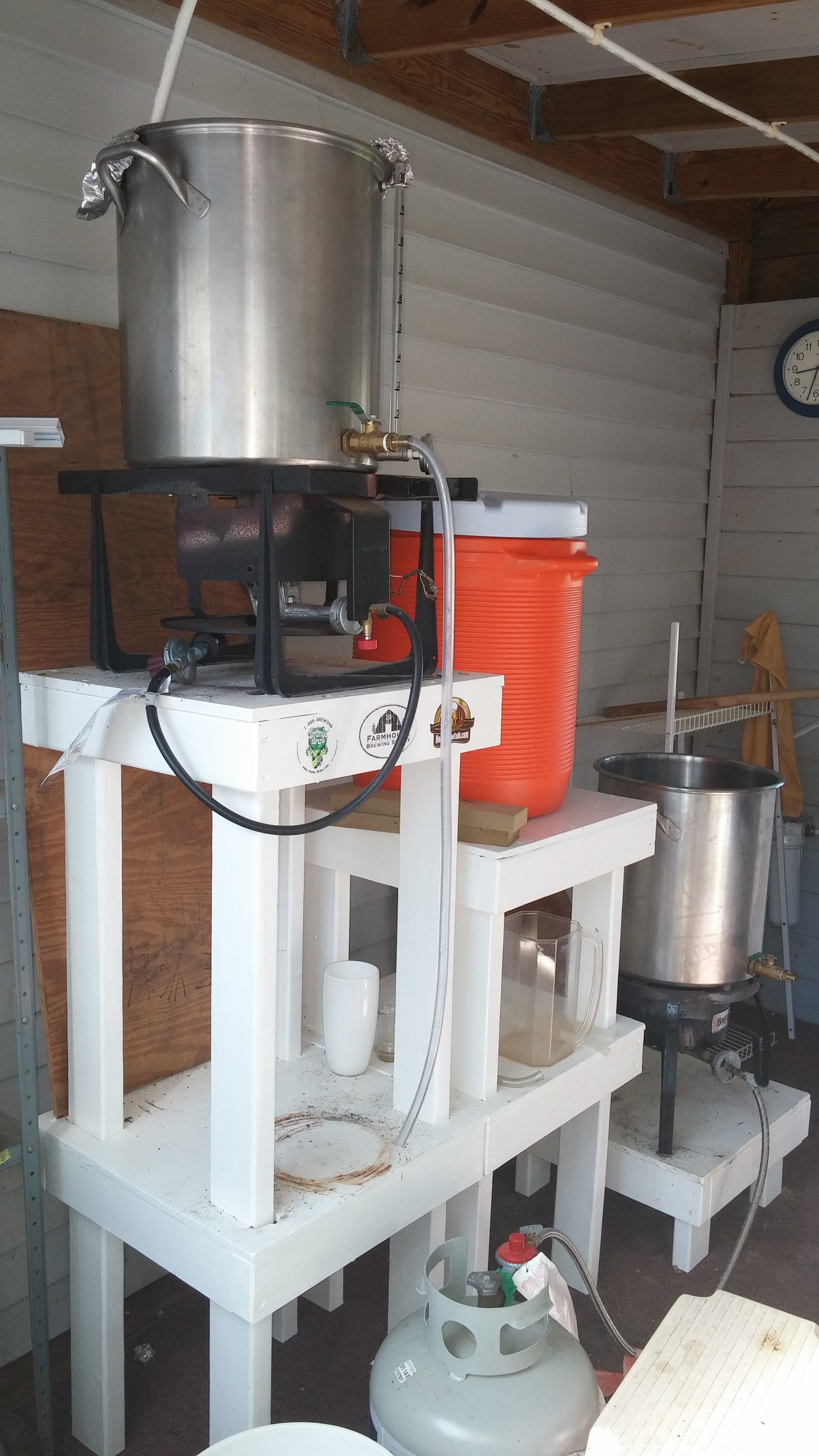Soulshine2
Well-Known Member
I have been working (union millwright) my butt off for 5 months and now that I'm laid off I have time to bring my brew stand to fruition . I only brew 5-6 gallon batches and not very often so I'm not looking to invest a whole lot of money into this. I've brewed a couple good batches so far so I know what basic supplies I need to brew , those I own already . Just wanting to incorporate it into a roll around or somewhat mobile unit so I can push it up to the wall out of the way in the basement when Im not brewing.
Heres what I have come up with so far.
My 6 gallon carboy is 23 inches tall , this can just sit on the floor on top of some 1/4 inch rubber mat I picked up on a job .
my boil kettle is 18 inches tall with the drain spout being about 2 inches up from the bottom.
Mash tun (igloo ice cube cooler ) is also 18 inches with the spout 2 inches up. So if I build the tier levels at actual vessel heights, it would put the height of my strike/sparge water tier at 60 inches above the floor. A little tall but for lifting 3 gallons(cold) its not bad.
I have a small apartment/dorm sized electric stove that I am planning on taking apart to use a small element at the top for strike and sparge water heating while taking the largest burner to put on the lowest tier to the boil kettle. put a burner control panel under the mash tun. Gravity moves the water/wort one tier to the next. I figure the whole rig ,end to end ,only needs to be like 36 inches if the top tier sits directly over the bottom tier. depth about the same then I can make a step to reach or see the top of the strike water kettle .
I have water/drain and electric service in the basement already . I just need to figure out how to rework all of the wiring for the electric element burners and control knobs. My construction will probably be wood and topped with 1/8" steel sheet to drop the burners into like a sink is in a countertop. I might even cover the sheet steel with some dur-rock/tile for heat shielding.
I looked at Mike C's rig yesterday and I really like it.
I commented but his (then new) rig was posted 10 years ago ,is he still around ?
Heres what I have come up with so far.
My 6 gallon carboy is 23 inches tall , this can just sit on the floor on top of some 1/4 inch rubber mat I picked up on a job .
my boil kettle is 18 inches tall with the drain spout being about 2 inches up from the bottom.
Mash tun (igloo ice cube cooler ) is also 18 inches with the spout 2 inches up. So if I build the tier levels at actual vessel heights, it would put the height of my strike/sparge water tier at 60 inches above the floor. A little tall but for lifting 3 gallons(cold) its not bad.
I have a small apartment/dorm sized electric stove that I am planning on taking apart to use a small element at the top for strike and sparge water heating while taking the largest burner to put on the lowest tier to the boil kettle. put a burner control panel under the mash tun. Gravity moves the water/wort one tier to the next. I figure the whole rig ,end to end ,only needs to be like 36 inches if the top tier sits directly over the bottom tier. depth about the same then I can make a step to reach or see the top of the strike water kettle .
I have water/drain and electric service in the basement already . I just need to figure out how to rework all of the wiring for the electric element burners and control knobs. My construction will probably be wood and topped with 1/8" steel sheet to drop the burners into like a sink is in a countertop. I might even cover the sheet steel with some dur-rock/tile for heat shielding.
I looked at Mike C's rig yesterday and I really like it.
I commented but his (then new) rig was posted 10 years ago ,is he still around ?



